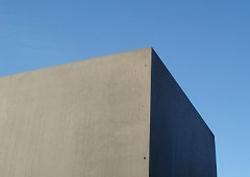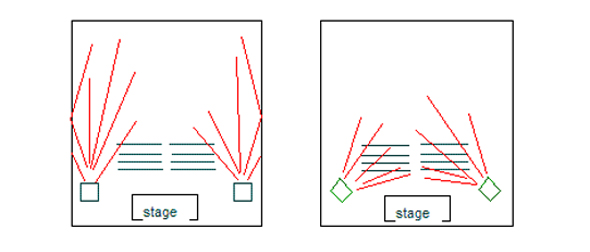A room lacking sound absorption material can be a nightmare for mixing.
I’ve mixed in a few of these rooms myself.
From what I’ve found, a number of you mix in such rooms on a regular basis.
In fact, the most common question I get is, “what the best way to mix in a gymnasium?”
A gymnasium has:
—Concrete walls
—Hardwood floors
—And ceilings open to the steel rafters
My first thought is always the same—“tear down the wall that’s facing your loudspeakers.” I have yet to have anyone take me up on that offer. This leaves me with giving you more practical advice.
How to Mix in concrete Boxes
You must realize such rooms have two keys issues:
1) Lack of sound absorption materials.
2) Lack of clarity and definition with loud volumes.
Dealing With A Lack Of Absorption Materials
The lack of sound absorption means you are working in a highly reflective room.
Imagine throwing a rubber ball, as hard as possible, against the wall. How many times would it bounce around until it finally stopped? A lot!
There are two steps you can take for slowing down that rubber ball (reducing the amount of reflection in the room):
1) Optimize loudspeaker direction. When you set up the loudspeakers, how much of their sound field is pointed at the chairs and how much is pointed at the walls?
You might be bouncing much of your sound off the walls before it ever gets to the people in the chairs.
Therefore, turn those speakers inward for a tighter focus of your sound.
Consider the two setups shown in the image below, and notice where the sound is traveling.
2) Add any type of sound absorption. Now, with the loudspeakers angled inward, it should be obvious most of the reflected sound will come off the back wall or the far end of the walls.
You have a couple of options as to what you can do.
First, build modular panels that can be stood up across the back of the last row of seats. Cover these panels in a heavy dense cloth. You could build these out of PVC pipes.
They won’t stop all sound from reflecting but they can cut down a lot on the reflection.
Second, use the el-cheapo method of putting stuff behind that last row of chairs, such as plastic plants and coat racks (with coats/clothes). All solutions aren’t necessarily pretty.






















